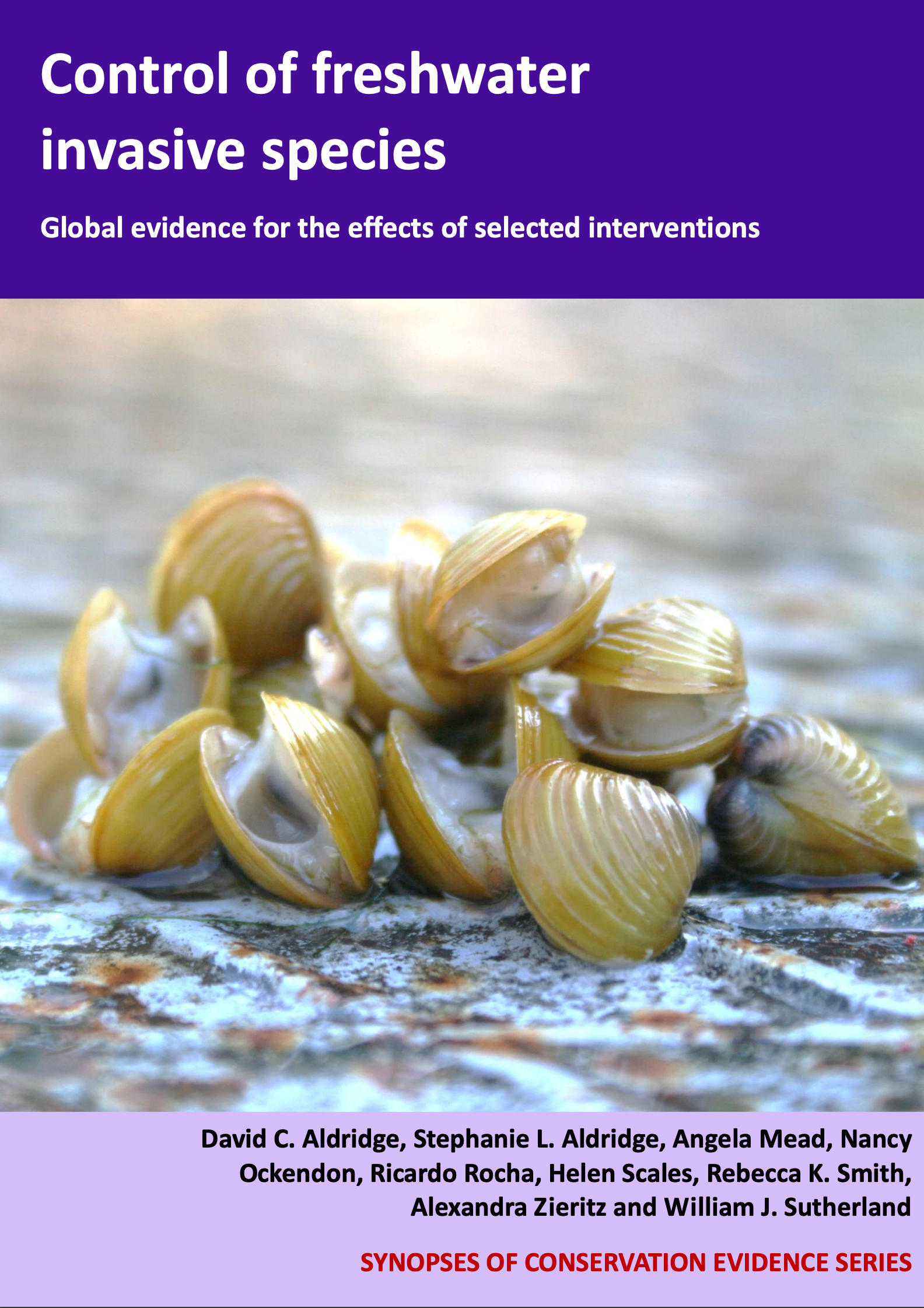Asian clams: Add chemicals to the water
-
Overall effectiveness category Beneficial
-
Number of studies: 3
View assessment score
Hide assessment score
How is the evidence assessed?
-
Effectiveness
75% -
Certainty
70% -
Harms
not assessed
Study locations
Supporting evidence from individual studies
A replicated laboratory study conducted between 1976 and 1978 on specimens from a river in the USA (Cherry et al. 1980) found that Asian clams Corbicula fluminea, were killed when exposed to concentrations of chlorine, potassium and heavy metals. Half of the clams died after exposure to 0.69 mg per litre of chlorine in tanks for 10 days. Up to 89% died within four days of exposure to 140 mg per litre of potassium. Copper was the most toxic with half of the clams dying when exposed to 0.59 mg per litre for one day and 0.04 mg per litre for four days. The toxicity of several biocides was tested in static and continuous-flow tests. Fourteen replicate tanks and four artificial streams were used, respectively. There were 12 clams per tank and nine clams per artificial stream (flow rates were maintained at 0.5-0.8 litres/min). Clams were exposed to various concentrations of chlorine, potassium and copper for between one and 10 days. Survival of clams was checked and recorded.
Study and other actions testedA controlled, replicated laboratory and field study in 1983-1985 in the USA (Doherty et al. 1986) found that dosing clams with chlorine and bromine killed up to 95% of Asian clams Corbicula fluminea. Dosing at higher concentrations and higher temperatures killed clams in a shorter time. Adults and juveniles were similarly sensitive to both chlorine and bromine and both chemicals were equally effective. In the laboratory, < 53% of clams died when exposed to a 32 day dose at 0.2-1.0 mg/litre total residual chlorine (TRC) at 16 °C. Using the same doses and duration but at higher temperatures (>18 °C) killed > 53% of clams. In the laboratory, a 14 day low dose (0.25 mg/litre TRC) followed by an 18 day high dose (0.5-1.0 mg/litre TRC) killed > 80% of the clams at 20 °C. A constant high dose (0.5-1.0 mg/litre TRC) for 32 days at 20 °C killed 60-95% of the clams. In the field, 90% of clams were killed when exposed to a 28 day dose of 0.25 mg/litre TRC during the spring when ambient temperatures were 20-25 °C. In the autumn, <24% of clams were killed when exposed to a 28 day dose of <0.5 mg/litre TRC, when ambient temperatures were lower (12-20 °C). No clams died in the control treatments. In the laboratory tests, 30 adult clams were placed in one of five replicate artificial streams with chlorine treatments. Juveniles were added to some replicates. Survival of clams was recorded daily. In the field, two flow-through chambers (1 x 0.25 m) in spring and three in autumn were used to expose 25-30 Asian clams with chlorinated water. Chambers were placed at four sites within the intake stream of an industrial plant which suffered from Asian clam fouling. A control group of clams was exposed to non-chlorinated water. Survival of clams was recorded.
Study and other actions testedA controlled field trial conducted in 2011 in irrigation systems in Spain (BioBullets 2012) found that Asian clams of Corbicula fluminea and Corbicula fluminalis species showed 80% mortality when exposed to a fat-coated chemical called SB1000 and 100% mortality when exposed to a fat-coated chemical called SB2000. Clams of all sizes present were equally susceptible to the chemical. The chemicals were coated with an attractant to the clams. This targeted method of delivery to the filter-feeding clams resulted in the need for reduced concentrations of the chemicals. The product was approved for use within in-service irrigation systems for almonds, cherries and olives, and there were no negative effects on the crops. The chemical SB1000 was dosed at 150 mg/l and SB2000 at 30 mg/l for eight hours a day for two days, using a calibrated powder doser, with the products being delivered into different parts of the irrigation system. The number of live, freshly gaping and freshly empty shells were monitored before and after dosing and subsamples of clams were measured. Clams were monitored in a control irrigation pipe which received no chemicals. No clams died in the control pipe.
Study and other actions tested
Where has this evidence come from?
List of journals searched by synopsis
All the journals searched for all synopses
This Action forms part of the Action Synopsis:
Control of Freshwater Invasive Species
Control of Freshwater Invasive Species - Published 2017
Control of Freshwater Invasive Species Synopsis





)_2023.JPG)














